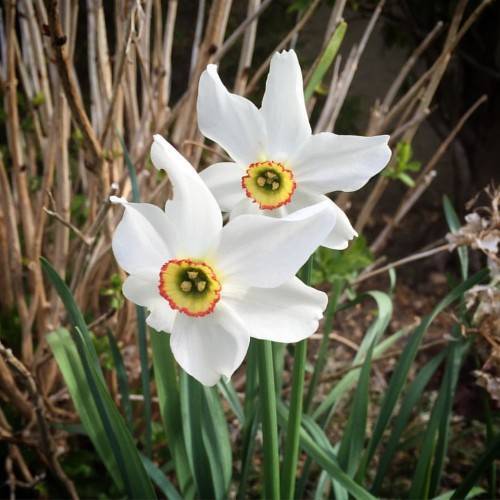
small-cupped daffodil
Narcissus 'After All'
Cycle:
Perennial
Watering:
Average
Hardiness Zone:
3 - 8
Flowers:
Flowers In Spring
Sun:
Full sun,part shade
Leaf:
Yes
Growth Rate:
Low
Maintenance:
Low
Drought Tolerant:
Yes
Care Level:
Medium
watering
Small-cupped Daffodil (Narcissus 'After All') should be watered fairly frequently, especially after it has been planted. As this plant is not drought tolerant, aim to keep the soil mildly moist but not soggy. Water the plant deeply (about 1 inch of water) once a week during dry seasons or periods of high temperatures. To ensure that the water is getting to the roots, water at the base of the plant and not overhead as this could damage the blooms. During cooler months, water about once a fortnight.
sunlight
Small-cupped daffodils like Narcissus 'After All' prefer at least 4 hours of direct sunlight each day to grow well and produce an abundance of blooms. Most varieties of daffodil prefer full sunlight in the morning, moving to partial shade in the afternoon. This plant species, however, can tolerate being in full sun all day. If this is not possible, a combination of direct and indirect sunlight should be provided. During winter and cooler months it is best to position this variety of daffodil in indirect sun to ensure it remains healthy.
pruning
Small-cupped daffodil (Narcissus 'After All') should be pruned after flowering has finished, usually during the summer months. Pruning should be done lightly and it may be best to wait for at least a month after flowering has died down before cutting down the plant. When pruning, it is important to remove only the dead, diseased, or dying foliage and stems, and to leave most of the healthy green foliage. Always disinfect your garden tools after pruning to avoid the spread of disease. Dead and diseased foliage may be composted. If you are wanting to replant the bulbs or divide the plant, this can be done at the same time you are pruning.
